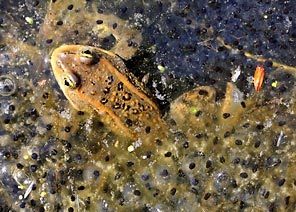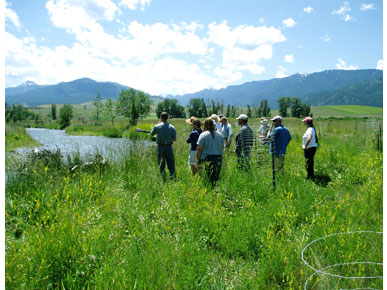
PNW amphibian experts have found evidence of a fungal scourge in frogs that has previously wiped out amphibian populations around the world–think ebola for frogs. And that’s not all.
As reported in a recent Seattle Times article:
“…killer fungus is only one of the perils amphibians face today, said Oregon State University biologist Andrew Blaustein, whose own research has shown that UV radiation can harm amphibians and their eggs. Chemical contaminants, parasites and other diseases also take a toll. Susceptibility varies by species, and factors interact, Blaustein pointed out. A frog whose immune system is weakened by UV radiation or toxins may be more vulnerable to infection. Global warming adds another level of stress.”
More than just a handsome prince waiting to be kissed by a princess, frogs are vital to the ecosystem. For one thing, they eat lots and lots of insects. And princesses aren’t the only ones who would suffer if frogs didn’t eat all those bugs.
 Congratulations to Jim Carrington, professor of botany and plant pathology, for his election to the National Academy of Sciences!
Congratulations to Jim Carrington, professor of botany and plant pathology, for his election to the National Academy of Sciences!


 “There are plenty of hypotheses about why the dinosaurs went extinct. The most popular is that an asteroid hit the Earth and created a cloud of debris that cooled the planet, leading to the dinosaurs’ eventual demise. But that scenario has never been universally satisfying, and now Dr. George Poinar is proposing his own idea. He’s an entomologist in the department of Zoology at Oregon State University, and the author of What Bugged the Dinosaurs. In his book, he explores an often overlooked aspect of life in the Cretaceous period: the role of insects in ecology. He believes invertebrates played a major role in shaping the world at that time, including spreading disease to a largely naive dinosaur population. That, he suggests, may have pushed them to the edge of extinction, and combining that with changes to the environment may have pushed them over the edge to total loss.”
“There are plenty of hypotheses about why the dinosaurs went extinct. The most popular is that an asteroid hit the Earth and created a cloud of debris that cooled the planet, leading to the dinosaurs’ eventual demise. But that scenario has never been universally satisfying, and now Dr. George Poinar is proposing his own idea. He’s an entomologist in the department of Zoology at Oregon State University, and the author of What Bugged the Dinosaurs. In his book, he explores an often overlooked aspect of life in the Cretaceous period: the role of insects in ecology. He believes invertebrates played a major role in shaping the world at that time, including spreading disease to a largely naive dinosaur population. That, he suggests, may have pushed them to the edge of extinction, and combining that with changes to the environment may have pushed them over the edge to total loss.”
